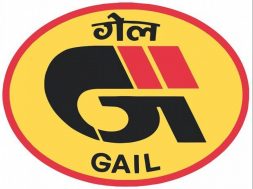
Fund diversion and savings on previous order to help meet the subsidy cost
The central government is planning to come up with an electric bus (e-bus) tender to procure around 3,500 new e-buses for nine cities with a population over 4 million each, Business Standard has learnt.
The move comes a month after the Ministry of Heavy Industries’ (MHI’s) decision to raise the funding support for e-buses to Rs 4,307 crore, from the budgeted Rs 3,545 crore. In May, the ministry slashed subsidies for three-wheelers, four-wheelers, and charging infrastructure as part of a major rejig of the ₹10,000-crore electric vehicle (EV) incentive scheme — Faster Adoption and Manufacturing of (Hybrid &) Electric Vehicles (FAME-II).
“This month, we had two consultation rounds with state/city transport undertakings (STUs) and have asked them to submit details of their e-buses requirements,” said a top government official, adding, “the tender will come soon as we are expecting STUs to submit details from these cities within a month.”
The plan is to cover nine cities: Mumbai, Delhi, Bengaluru, Hyderabad, Ahmedabad, Chennai, Kolkata, Surat, and Pune.
The new procurement will be done through the diverted funds, savings made on competitive bidding in earlier tenders, and the money that remained unused after the cancellation of orders by a few STUs.
Apart from Rs 762 crore diverted towards the e-buses category, Rs 536 crore was saved by the government due to competitive bidding in the state-owned Convergence Energy Services’ (CESL’s) earlier tender. Moreover, orders for 348 buses were cancelled by STUs and that fund remains unused.
The scheme provides for a subsidy of Rs 20,000 per kWh for e-buses with a cap of 40 per cent of the vehicle’s cost and a maximum ex-factory price limit of Rs 2 crore. According to the FAME-II guidelines, the approximate size of the battery in an e-bus is 250 kWh.
The subsidy helps manufacturers reduce the cost of e-buses by around Rs 50 lakh each. Each electric bus costs more than Rs 1.2 crore, about five times the cost of a diesel-fuelled bus.
The competitive bidding process helped reduced total subsidy outflow from the projected Rs 50 lakh for an electric bus to around Rs 41 lakh.
“Based on the previous competitive bidding experience, we are looking forward to issuing a tender. A total of Rs 1,298 crore — Rs 762 crore diverted and Rs 536 crore saved — will help us meet the demand for 3,165 buses. And, the 348 buses, orders for which got cancelled, will also be added to the tender,” said an official working on the scheme.
With the additional funds, the ministry is planning to ask CESL to come up with a mega bus tender. “Soon, a fresh tender for these buses will be issued through CESL,” said another official.
After the new tender, the target of e-buses under the scheme will increase to 10,375. A total of 7,210 e-buses have already been approved by the government. A total of 7,090 buses under the scheme were sanctioned in 2019. However, so far, only 2,435 e-buses have been deployed, according to the MHI data.
The fresh order will help CESL in its plan to deploy 50,000 e-buses under the National e-Bus Program (NEBP) in a phased manner. This move will also help India achieve its target of 40 per cent e-bus penetration by 2030 and net neutrality by 2070.
As on May 31 2023, of the 359,432 buses registered in the country since the start of FAME scheme in April 2015, only 4,506 buses (1.25 per cent) are electric.













